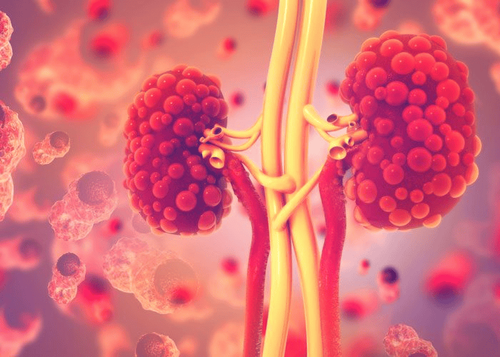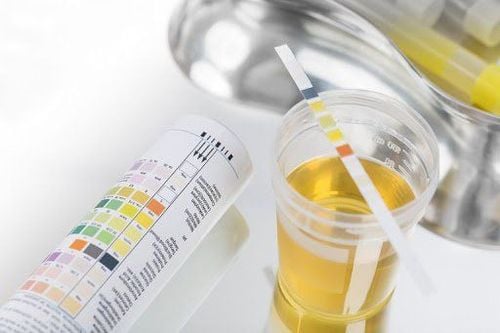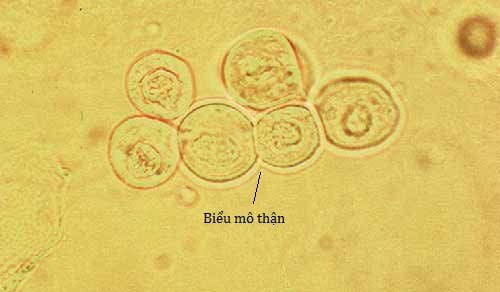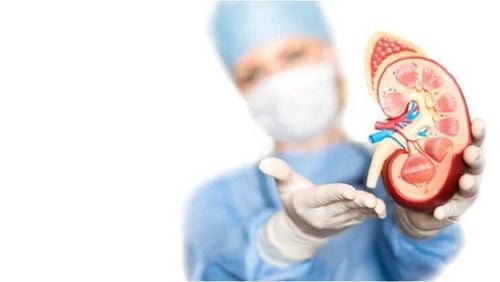This is an automatically translated article.
The article was written by Doctor of Emergency Department - Vinmec Phu Quoc International General HospitalUrine is generally pale yellow and relatively transparent; But for each person's urination, the color, quantity, concentration and content of substances in the urine will be slightly different due to different components. Urine tests include glucose, protein, bilirubin, red blood cells, white blood cells, crystals, and bacteria.
3. Change of cellular components in urine
3.1. Urine red blood cells Normal urine has 0-1 red blood cells in a microfield, 3 red blood cells per milliliter, or less than 1000 red blood cells per minute on the Addis residue test. If the number of red blood cells in the urine is increased, hematuria is present.
+ Microscopic hematuria if:
- Having 1-2 red blood cells in a microfield is (+)
- Having 3 red blood cells in a microfield is (++).
- There are 4-5 red blood cells in a microfield (+++)
- Having 6-7 red blood cells in a microfield is (++++)
+ Gross hematuria: microscopic dense red blood cells , or more than 5000 red blood cells per minute on the Addis residue test.
Microscopic erythrocytosis is seen in kidney diseases, such as acute glomerulonephritis, chronic glomerulonephritis, acute pyelonephritis, chronic pyelonephritis, cystitis, urethritis, renal system stones urology, IgA nephropathy. RBC casts may be encountered in acute glomerulonephritis.
Gross hematuria can be seen in severe acute glomerulonephritis, pyelonephritis, ureteral stones, bladder stones, trauma to the urinary system, IgA nephropathy.

Đái ra máu là dấu hiệu số lượng hồng cầu trong nước tiểu tăng
3.2. Urinary pus. Pusuria is a condition in which urine contains many polymorphonuclear leukocytes and pus cells (degenerative polymorphonuclear leukocytes). If there is a lot of pus, it can be seen with the naked eye, the urine is cloudy with pus color, and the pus residue sticks to the test tube for a long time. If there is little pus, the urine is cloudy white with pus strings hanging around.
Urinalysis shows many pus cells, polymorphonuclear leukocytes, possibly few epithelial cells, bacteria, fibrin, and mucoproteins. Purulent urination is often accompanied by blood in the urine, making the urine a milk chocolate color. Purulent urination is seen in nephritis, urinary tract infections, cystitis, pyelonephritis, pyelonephritis. Bacteria are usually Gram-negative (60-70%), can also be caused by specific inflammatory diseases such as tuberculosis, gonorrhea, fungi.
3.3. Urine leukocytes Normal urine has 0-1 leukocytes in a microfield, 3 leukocytes per milliliter of urine, less than 2000 leukocytes per minute if Addis sediment is examined. When there is a urinary tract infection, the white blood cell count will increase.
+ Having 3-5 white blood cells in a microfield is (+).
+ Having 6 -10 leukocytes in a microfield is (++).
+ Having 11-20 white blood cells in a microfield is (+++).
+ Having more than 20 white blood cells in a microfield is (++++)
When there are more than 10 white blood cells in a microfield, or more than 5000 white blood cells in one minute, an infection is certain. When there are only 3-10 leukocytes in a microfield or 2000-5000 leukocytes per minute, an infection is suspected. If the leukocytes are dense in the microfield, there are many degenerated white blood cells (purulent cells) that are pyuria.
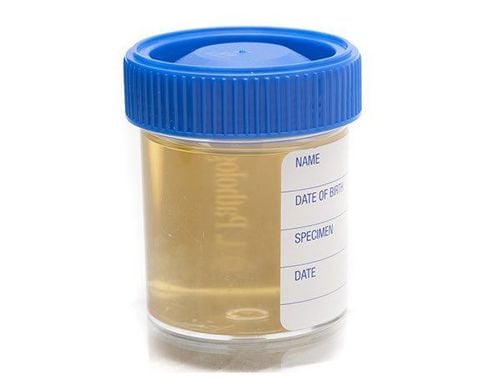
Bạch cầu niệu tăng bất thường trong nước tiểu là dấu hiệu cơ thể bị nhiễm khuẩn
3.4. Addis residue test To determine whether a patient has red or white blood cells in urine, and the severity of the red and white blood cells, an Addis residue test should be performed. How to conduct Addis residue test as follows:
+ Collect urine at 3 hours: at exactly 6 am or at any hour of the day, let the patient urinate all the time and discard this urine sample. Then give the patient 200ml of cooled boiled water. From there, if the patient urinates, collect all of the urine in a clean, covered set and keep in a cool place. At exactly 9 o'clock (three hours after the initial urine sample was removed), have the patient empty the bladder to empty the bladder. Measure the amount of urine collected, then calculate the number of milliliters per minute by dividing the number of milliliters of urine by 180 minutes (3 hours), record the amount of urine in one minute on the test paper and collect exactly 10ml of urine in urine sample 3 hours, centrifuge at 3000 rpm for 10 minutes, remove 9ml above, mix well the remaining 1ml spread onto a slide to count the number of red blood cells, white blood cells. The red blood cell count and white blood cell count are divided by 10 (since this red blood cell and white blood cell count is actually 10ml of centrifuged urine), and then multiplied by the amount of urine in one minute to get the number of red blood cells and white blood cells. cells per minute.
+ Evaluation of results: normal, urine has less than 1000 red blood cells/minute, and less than 2000 white blood cells/minute.
If the white blood cell count is increased a lot, the red blood cell count is normal or slightly increased, it is a sign of leukocytosis due to a urinary tract infection, if 2000-5000 white blood cells/minute is suspected of having an infection, if above 5000 white blood cells/minute is definitely a urinary tract infection. If the red blood cell count increases much while the white blood cell count is normal or slightly increased, hematuria is present. If 1000-5000 red blood cells/minute is microscopic hematuria, if more than 5000 red blood cells/minute is gross hematuria.
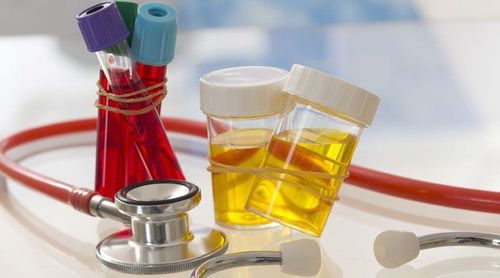
Xét nghiệm cặn Addis để xác định hồng cầu hoặc bạch cầu trong nước tiểu
3.5. Epithelial cells In normal urine, there may be few bladder epithelial cells, urethral epithelial cells. If the urine has tubular epithelial cells, or there are many epithelial cells of the bladder, urethra, it is a sign of kidney damage or urinary tract infection.
3.6. Cancer cells Cancer cells can be detected in the urine of patients with urinary system cancer if the urine is washed with a glass of urine and urine sediment is examined.
If you have a need for consultation and examination at Vinmec Hospitals under the nationwide health system, please book an appointment on the website for service.
Please dial HOTLINE for more information or register for an appointment HERE. Download MyVinmec app to make appointments faster and to manage your bookings easily.




